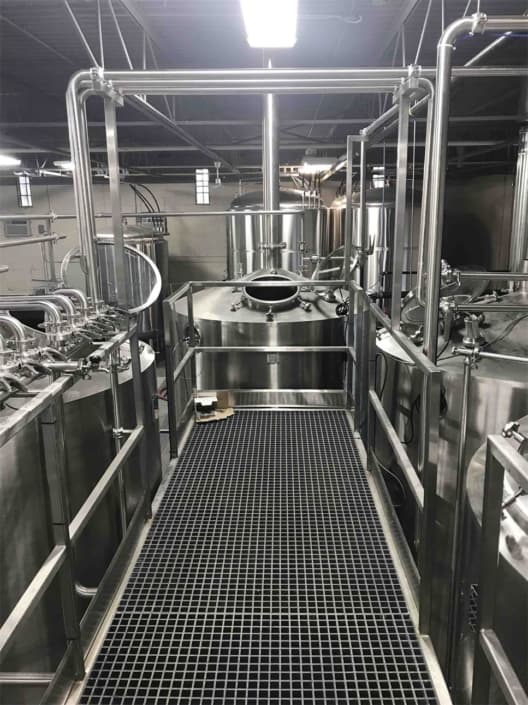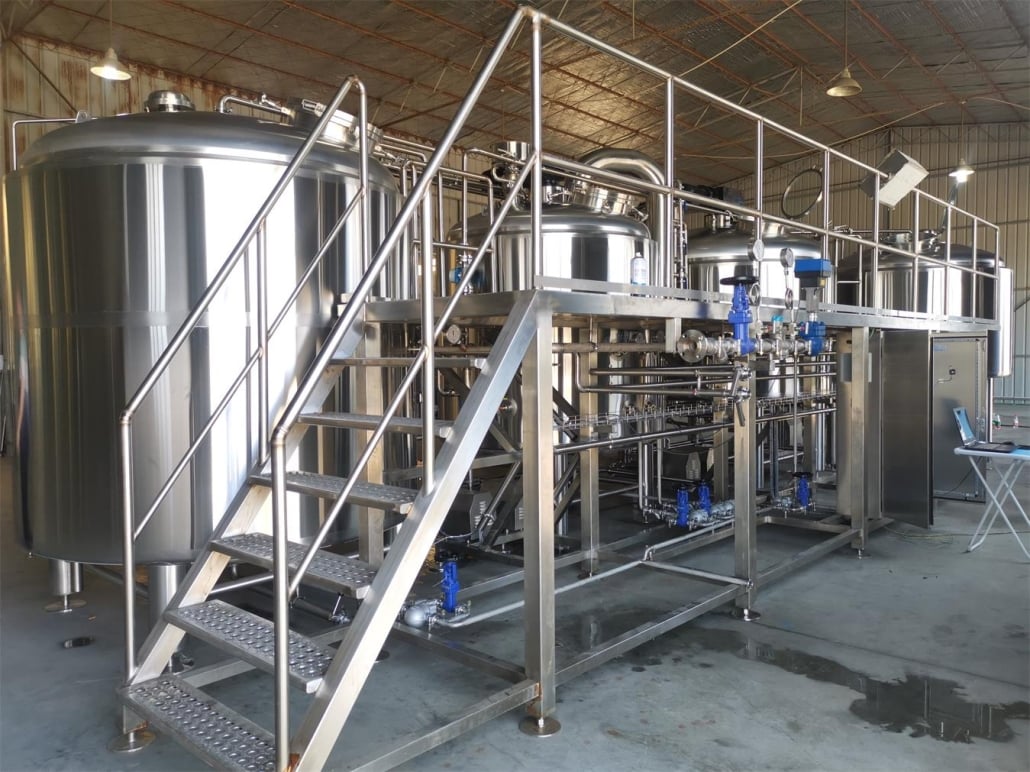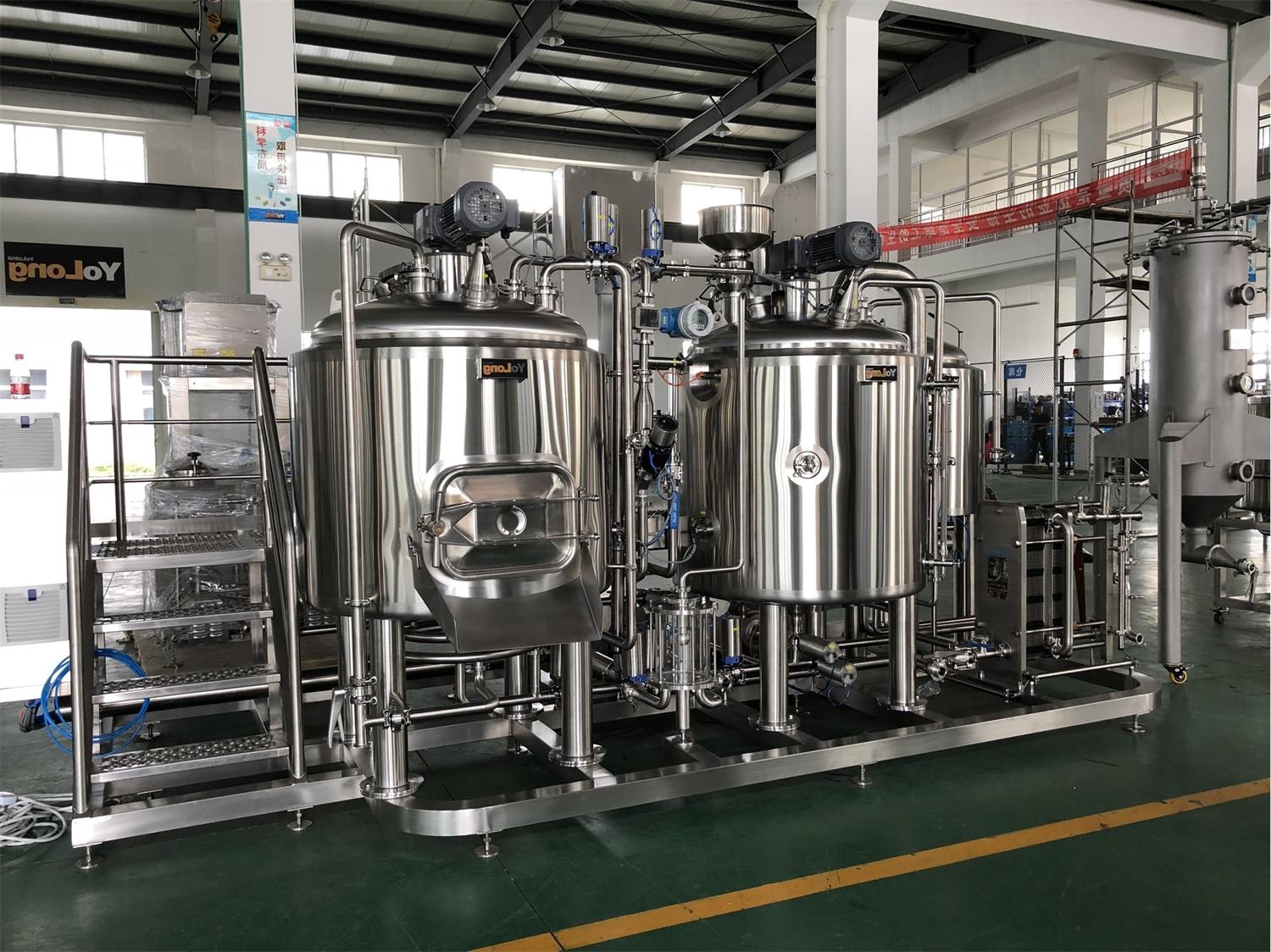The Ultimate Guide to Brewpub Equipment
Overview of Brewpub Equipment
Setting up a brewpub is an exciting endeavor, filled with visions of crafting unique beers and creating a vibrant community space. However, the journey begins with a critical aspect: selecting the right brewpub equipment. This comprehensive guide dives deep into the nuances of brewpub equipment, ensuring you have all the details to make informed decisions. From understanding the different types of equipment to grasping the intricacies of the brewing process, we’ve got you covered.
Essential Brewpub Equipment
Choosing the right equipment is crucial for the success of your brewpub. The equipment you select will directly impact the quality of your beer, the efficiency of your brewing process, and ultimately, the satisfaction of your customers.
Brewing System Components
Your brewing system is the heart of your brewpub. It consists of several critical components:
- Mash Tun: Where the mashing process takes place, converting starches into fermentable sugars.
- Lauter Tun: Used for separating the wort from the grain husks.
- Brew Kettle: Where the wort is boiled and hops are added.
- Whirlpool: Helps in clarifying the wort by separating solid particles.
- Fermenter: Where yeast is added to the wort to begin fermentation.
- Bright Tank: For maturing, clarifying, and carbonating the beer.
Supportive Equipment
In addition to the main brewing components, several supportive pieces of equipment are essential for a fully functioning brewpub:
- Grain Mill: For crushing malted barley to the desired consistency.
- Heat Exchanger: Used to cool the wort quickly after boiling.
- Pumps: To move liquids between various stages of the brewing process.
- Cleaning Systems: Ensure all equipment is sanitized and ready for use.
- Storage Vessels: For storing ingredients and finished beer.

Brewpub Equipment Types
Different brewpubs have varying needs based on their size, production goals, and target audience. Here’s a detailed look at the types of equipment and their specifications.
| Equipment Type | Description | Purpose |
|---|---|---|
| Mash Tun | Insulated vessel where malt is mixed with water | Converts starches into fermentable sugars |
| Lauter Tun | Vessel with a false bottom for wort separation | Separates wort from grain husks |
| Brew Kettle | Large vessel where wort is boiled and hops are added | Sterilizes wort, extracts hop flavors and aromas |
| Whirlpool | Vessel where wort is swirled to remove solids | Clarifies wort by separating solid particles |
| Fermenter | Airtight tank where yeast is added to wort | Ferments sugars into alcohol and carbon dioxide |
| Bright Tank | Pressurized vessel for maturing and carbonating beer | Clarifies, matures, and carbonates the beer |
| Heat Exchanger | Device for rapid cooling of boiled wort | Reduces wort temperature quickly to yeast pitching range |
| Grain Mill | Machine for crushing malted barley | Prepares malt for mashing process |
| Pumps | Various pumps used throughout the brewing process | Moves liquids between vessels |
| Cleaning Systems | Systems for cleaning and sanitizing brewing equipment | Maintains hygiene and sanitation of equipment |
| Storage Vessels | Containers for storing raw ingredients and finished beer | Stores ingredients and beer under controlled conditions |
The Brewing Process
Understanding the brewing process is fundamental to grasping how each piece of equipment fits into the production of beer. Here’s a step-by-step guide through the process.
Step-by-Step Brewing
- Milling: The process begins by milling the malt to break down the grain kernels and expose the starches.
- Mashing: The milled grain is mixed with hot water in the mash tun. Enzymes convert the starches into fermentable sugars, creating the mash.
- Lautering: The mash is transferred to the lauter tun, where the wort is separated from the grain husks. The wort is then collected and transferred to the brew kettle.
- Boiling: In the brew kettle, the wort is boiled, and hops are added at various stages for bitterness, flavor, and aroma. Boiling also sterilizes the wort.
- Whirlpooling: After boiling, the wort is moved to the whirlpool, where it’s swirled to separate solids. This step helps clarify the wort.
- Cooling: The wort is rapidly cooled using a heat exchanger to a temperature suitable for fermentation.
- Fermentation: The cooled wort is transferred to a fermenter, and yeast is added. The yeast ferments the sugars, producing alcohol and carbon dioxide.
- Maturation: The beer is then moved to a bright tank for maturation. This step helps in clarifying and carbonating the beer.
- Packaging: Finally, the beer is packaged into kegs, bottles, or cans for distribution and sale.
Capacity, Spaces, Design, and Layout
The design and layout of your brewpub equipment are as important as the equipment itself. Here’s a detailed look at how capacity and space considerations can impact your setup.
| Aspect | Details |
|---|---|
| Capacity | Choose equipment based on your production goals. Smaller systems (3-5 barrels) for brewpubs, larger (10-20 barrels) for regional distribution. |
| Spaces | Efficient use of space is crucial. Plan for brewing area, storage, and customer seating. Consider future expansion in your design. |
| Design | Opt for a design that complements your brewpub’s theme. Stainless steel equipment is popular for its durability and aesthetic appeal. |
| Layout | Ensure a logical flow from milling to packaging. Minimize the distance between stages to improve efficiency. |
| Customization | Many manufacturers offer customizable options to fit your specific needs, from the size of vessels to additional features like automated controls. |
Brewpub Equipment Suppliers and Price Range
Selecting the right supplier is as important as choosing the equipment itself. Here’s an overview of some reputable suppliers and their price ranges.
| Supplier | Price Range | Details |
|---|---|---|
| BrauKon | $100,000 – $500,000 | Known for high-quality German engineering and customizable systems. |
| Premier Stainless Systems | $50,000 – $300,000 | Offers a wide range of systems with excellent after-sales support. |
| SS Brewtech | $20,000 – $150,000 | Ideal for smaller brewpubs, focusing on innovative and modular designs. |
| Ager Tank & Equipment | $30,000 – $250,000 | Specializes in new and used brewing equipment, offering flexibility in budget. |
| Specific Mechanical Systems | $80,000 – $400,000 | Provides turnkey systems with a focus on efficiency and quality. |
Installation, Operation, and Maintenance
Proper installation, operation, and maintenance of your brewpub equipment are crucial for optimal performance and longevity.
| Aspect | Details |
|---|---|
| Installation | Work with experienced professionals to install your equipment. Ensure all components are correctly set up and tested. Adequate training for staff during installation can prevent future issues. |
| Operation | Familiarize yourself with the operating manuals of each piece of equipment. Regular training sessions for your brewing team can enhance efficiency and safety. Automated systems can simplify operations but ensure staff are still trained for manual interventions. |
| Maintenance | Regular maintenance is essential to keep your equipment in top condition. Follow the manufacturer’s guidelines for cleaning and servicing each component. Implement a routine maintenance schedule and keep detailed records of all maintenance activities. Quick repairs can prevent minor issues from becoming major problems. |
How to Choose a Supplier
Choosing the right supplier for your brewpub equipment is a decision that can have long-term impacts on your business.
| Criteria | Details |
|---|---|
| Reputation | Look for suppliers with a solid reputation in the industry. Check reviews, ask for references, and visit other brewpubs using their equipment. |
| Customization | Ensure the supplier offers customization options to meet your specific needs. Discuss your requirements and see how flexible they are in accommodating them. |
| Support | Consider the level of after-sales support provided. A supplier who offers training, maintenance, and prompt repair services can save you time and money in the long run. |
| Cost | While cost is important, it shouldn’t be the sole factor. Balance the initial investment with the potential for long-term savings and efficiency. |
| Quality | Inspect the quality of the materials used. Stainless steel is preferred for its durability and ease of cleaning. |
Advantages and Limitations of Brewpub Equipment
When selecting brewpub equipment, it’s essential to weigh the pros and cons of different options.
| Aspect | Advantages | Limitations |
| Stainless Steel | Durable, easy to clean, resists corrosion. | Higher initial cost compared to other materials. |
| Automated Systems | Increases efficiency, reduces labor costs, ensures consistency. | Can be expensive to install and may require technical expertise to operate and maintain. |
| Modular Systems | Flexibility to expand or reconfigure as needed. | Initial setup can be complex, may require significant planning and space. |
| Used Equipment | Lower initial cost, immediate availability. | May have shorter lifespan, potential for hidden issues, limited customization options. |
| New Equipment | Latest technology, warranty and support, tailored to your needs. | Higher cost, longer lead times for manufacturing and delivery. |

FAQs
What is the most important piece of brewpub equipment?
The most crucial piece of equipment in a brewpub is arguably the fermenter. This is where the magic happens – where wort becomes beer through fermentation. The quality and condition of the fermenter can significantly impact the final product.
How much space do I need for a brewpub?
The space required for a brewpub depends on the scale of your operations. A small brewpub might need around 1,500 to 2,000 square feet, while larger operations could require 5,000 square feet or more. Efficient use of space and good layout design can help optimize your setup.
Can I use used equipment for my brewpub?
Yes, used equipment can be a cost-effective option, especially for startups. However, it’s essential to thoroughly inspect the equipment for any signs of wear and ensure it meets your needs. Working with reputable suppliers who offer used equipment can mitigate some risks.
What are the maintenance requirements for brewpub equipment?
Regular maintenance is vital to keep your brewpub equipment running smoothly. This includes routine cleaning, inspecting parts for wear, and following the manufacturer’s guidelines for servicing. Implementing a maintenance schedule and training staff on proper care can prevent costly downtime.
How do I choose the right supplier for brewpub equipment?
Choosing the right supplier involves considering their reputation, the quality of their equipment, customization options, support services, and cost. Visiting other brewpubs, reading reviews, and discussing your specific needs with potential suppliers can help you make an informed decision.
Conclusion
Setting up a brewpub is a blend of art and science, and choosing the right equipment is foundational to your success. By understanding the different types of brewpub equipment, the brewing process, and the factors to consider when selecting suppliers, you can make informed decisions that will help your brewpub thrive. Whether you’re starting small or aiming for regional distribution, the right equipment and setup will ensure your brewing operations run smoothly and your customers enjoy top-quality beer. Cheers to your brewing journey!
Share this entry
Interested in learning more about Brewing Systems including additional details and pricing information? Please use the form below to contact us!
YOLONG BREWERY EQUIPMENT FAQS
- Commercial Brewery / Craft Brewery / Microbrewery / Nanobrewery
- What is The Difference Between Craft Beer and Industrial Beer?
- The Bespoke Differences In Custom Brewing Systems
- Everything You Need to Know About Kettle Souring
- How to Choose Brewing Equipment for Your business?
- How To Choose The-Best Partner To Build Your Commercial Microbrewing System?
- Two Detection Sensors That You Need To Use In Your Brewhouse System
- Remote Control Applications in Brewing Equipment/How does it work?
- How To Clean Your Brand New Brewery Tanks?

